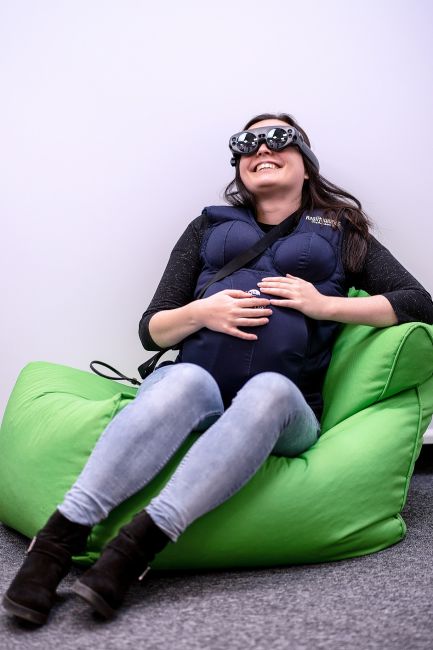The project under the acronym ATOMIC focuses on management students.
- We have created several scenarios on issues such as health and safety - in offices and on the production floor, product design taking into account the needs of users and transport optimization. Currently we are working on preparing test versions of the software. Augmented reality (AR) simulations provide an attractive, although digitally created, environment for active work during exercises - says the project coordinator, Dr inż. Dorota Kamińska.
A combination of the real world and the digitally created world, i.e. mixed reality (MR) is used in the Mr. UD project, also coordinated by TUL. In this case, the activities focus on the so-called universal design, i.e. design that takes into account the needs of all people moving around in public space.
Image
- By creating educational scenarios and using Mixed Reality, we want to ensure better understanding of various limitations resulting from disabilities or, for example, age. Arranged virtual events will allow future engineers to feel comfortable in the roles of future users,' emphasizes Dr. Kamińska.
Another project called VRAna, in which the leading role is played by virtual reality (VR) is conducted for medical students. Scientists from Lodz University of Technology are responsible for works in the field of information technology. In this case, a library of models of the human skeletal and muscular system is being created. The first pilot tests of the software took place, despite the pandemic, at the Charles University in Prague. Models of individual details take into account such features as age, height, gender, race, disease or post-traumatic changes, among others. The solution being developed is to provide students with a vast knowledge base unattainable in the conditions of a real laboratory. Upon completion of the project, the product will be made available to medical universities free of charge.
